African-American Inventors
A Sampling of African-American Inventors and Their Inventions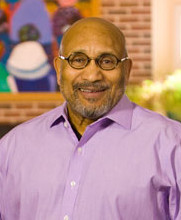 The Image of Magazine continues it’s celebration of American History in Black with African American Inventors. The proud history of the contributions of many African Americans to the growth of the US has been noted but not widely celebrated. The fact that we dedicate one month of the year to acknowledge a particular group contribution, diminishes their importance as Americans. Inventions are the foundation of growth of a nation and the United States has had many, from all segments of the country. We chose to start our article with the acknowledgement of Emmit McHenry for the simple fact that you are able to read this article. The internet has not only changed American culture but the entire world and how we communicate. Although many individuals and corporations have laid claim to the rights and advancement of the world wide web. Let the history be told.
The Image of Magazine continues it’s celebration of American History in Black with African American Inventors. The proud history of the contributions of many African Americans to the growth of the US has been noted but not widely celebrated. The fact that we dedicate one month of the year to acknowledge a particular group contribution, diminishes their importance as Americans. Inventions are the foundation of growth of a nation and the United States has had many, from all segments of the country. We chose to start our article with the acknowledgement of Emmit McHenry for the simple fact that you are able to read this article. The internet has not only changed American culture but the entire world and how we communicate. Although many individuals and corporations have laid claim to the rights and advancement of the world wide web. Let the history be told.
Emmit McHenry and his partners were ahead in the technology game, but Blacks Business people refuse to join him.
In 1979, Emmit McHenry and a few associates start an engineering company name Network Solutions. For 16 years, he and his partners toiled away and built a solid company. They could not get money from the financial institute so they mortgage their properties and max out their credit cards. They were good engineers and got many contracts but the gem within Network Solutions was a contract with the National Science Foundation, which was to create the U.S. Government’s and World first domain name addressing system for the Internet. This was back when the Internet was just a government project, and its commercial potential hadn’t been realized.
Emmit McHenry created a complex computer code whereby ordinary people can now surf the web or have e-mails without having to study computer science. He created what we know today simply as .com
On Dec. 31 1992, Network Solutions got the contract that would make the company a legacy. After the government review several company proposals, The National Science Foundation Department selected Network Solution as manager of domain names registration service for the Internet.
The contract was for $1 million a year for five years. Network Solution had the sole authority to develop and issue Internet system for Web addresses. What Network Solution developed was .com, .net, .edu, and. gov. to communicate on the Internet.
At the time Network Solutions already was handling other sensitive engineering projects for the government. To keep up with the demands the company needed to hire more workers and buy new equipment, but the fixed $1 million a year contract proved to be a constrained because no matter how many names the company registered, it could not charge more. Over the years demand for domain names increase and the company staff grew to 400 employees. Emmit applied to the government to charge directly for the domain names as the request for names continued to increase by the thousands. The government refuses and continues to pay the company $1 million a year for as many requested domain names.
Emmit went to wealthy high profile Blacks and they all refuse to invest in his company. He tried the financial institute and Wall Street and they also said no. He got some help from a white fellow engineer but it was not enough. In the mean time the government keeps insisting if he could not keep up with the volume they will break the contract.
In 1995 Emmit sold Network Solutions to Science Applications International Corp or SAIC for 4.8 million plus personal and business debt. In a few months the government gives SAIC the rights to charge $70.00 per year for each domain name plus royalty on any other created domain names, the same request Emmit wanted. With millions of people and companies requesting domain names there was a bidding war to buy this new cash cow SAIC acquired. A Wall Street Company name VeriSign Inc. was the winner. SAIC flip the newly purchase 4.8 million company to VeriSign Inc for $21 Billion within a year.
 BLOOD BANK BLOOD BANK
The idea of a blood bank was pioneered by Dr. Charles Richard Drew (1904-1950). Dr. Drew was an American medical doctor and surgeon who started the idea of a blood bank and a system for the long term preservation of blood plasma (he found that plasma kept longer than whole blood). His ideas revolutionized the medical profession and saved many, many lives. Dr. Drew set up and operated the blood plasma bank at the Presbyterian Hospital in New York City, NY. Drew’s project was the model for the Red Cross’ system of blood banks, of which he became the first director. |
CARVER, GEORGE WASHINGTON
 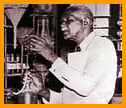 George Washington Carver (1865?-1943) was an American scientist, educator, humanitarian, and former slave. Carver developed hundreds of products from peanuts, sweet potatoes, pecans, and soybeans; his discoveries greatly improved the agricultural output and the health of Southern farmers. Before this, the only main crop in the South was cotton. The products that Carver invented included a rubber substitute, adhesives, foodstuffs, dyes, pigments, and many other products.For more information on Carver, click here. For a cloze (fill-in-the-blank) activity on Carver, click here. George Washington Carver (1865?-1943) was an American scientist, educator, humanitarian, and former slave. Carver developed hundreds of products from peanuts, sweet potatoes, pecans, and soybeans; his discoveries greatly improved the agricultural output and the health of Southern farmers. Before this, the only main crop in the South was cotton. The products that Carver invented included a rubber substitute, adhesives, foodstuffs, dyes, pigments, and many other products.For more information on Carver, click here. For a cloze (fill-in-the-blank) activity on Carver, click here. |
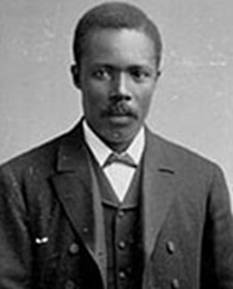 CRUM, GEORGE CRUM, GEORGE
The potato chip was invented in 1853 by George Crum. Crum was a Native American/African American chef at the Moon Lake Lodge resort in Saratoga Springs, New York, USA. French fries were popular at the restaurant and one day a diner complained that the fries were too thick. Although Crum made a thinner batch, the customer was still unsatisfied. Crum finally made fries that were too thin to eat with a fork, hoping to annoy the extremely fussy customer. The customer, surprisingly enough, was happy – and potato chips were invented!For more information on George Crum and potato chips, click here. |
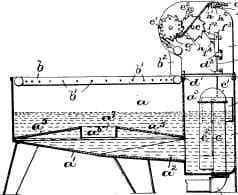 DORTICUS, CLATONIA JOAQUIN DORTICUS, CLATONIA JOAQUIN
Clatonia Joaquin Dorticus was an African-American inventor who received many patents. He invented an apparatus for applying dyes to the sides of the soles and heels of shoes (patent # 535,820, March 19, 1895), a machine for embossing (contouring the paper of) photographs (patent # 537,442, April 16, 1895), a device that helped develop photographs (patent # 537,968, April 23, 1895), and a leak stopper for hoses (patent # 629,315, July 18, 1899).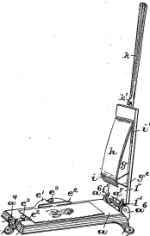 |
 DOWNING, PHILIP B. DOWNING, PHILIP B.
The street letter drop mailbox with a hinged door that closed to protect the mail was invented by Philip B. Downing. Downing, an African-American inventor, patented his new device on October 27, 1891 (US Patent # 462,093). |
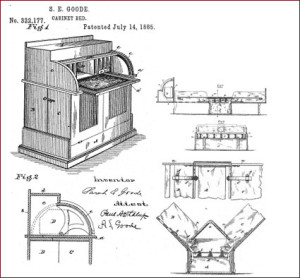 GOODE, SARAH S. GOODE, SARAH S.
Sarah E. Goode was a businesswoman and inventor. Goode invented the folding cabinet bed, a space-saver that folded up against the wall into a cabinet. When folded up, it could be used as a desk, complete with compartments for stationery and writing supplies. Goode owned a furniture store in Chicago, Illinois, and invented the bed for people living in small apartments. Goode’s patent was the first one obtained by an African-American woman inventor (patent #322,177, approved on July 14, 1885). |
MORGAN, GARRETT
 Garrett Augustus Morgan (March 4, 1877 – August 27, 1963), was an African-American inventor and businessman. He was the first person to patent a traffic signal. He also developed the gas mask (and many other inventions). Morgan used his gas mask (patent No. 1,090,936, 1914) to rescue miners who were trapped underground in a noxious mine. Soon after, Morgan was asked to produce gas masks for the US Army.For more information on Morgan, click here.The first American-made automobiles were introduced to consumers just before the turn of the 20th century, and pedestrians, bicycles, animal-drawn wagons and motor vehicles all had to share the same roads. To deal with the growing problem of traffic accidents, a number of versions of traffic signaling devices began to be developed, starting around 1913.Morgan had witnessed a serious accident at an intersection, and he invented a traffic control device and applied for a patent on it in 1922. His invention was a hand-cranked mechanical sign Garrett Augustus Morgan (March 4, 1877 – August 27, 1963), was an African-American inventor and businessman. He was the first person to patent a traffic signal. He also developed the gas mask (and many other inventions). Morgan used his gas mask (patent No. 1,090,936, 1914) to rescue miners who were trapped underground in a noxious mine. Soon after, Morgan was asked to produce gas masks for the US Army.For more information on Morgan, click here.The first American-made automobiles were introduced to consumers just before the turn of the 20th century, and pedestrians, bicycles, animal-drawn wagons and motor vehicles all had to share the same roads. To deal with the growing problem of traffic accidents, a number of versions of traffic signaling devices began to be developed, starting around 1913.Morgan had witnessed a serious accident at an intersection, and he invented a traffic control device and applied for a patent on it in 1922. His invention was a hand-cranked mechanical sign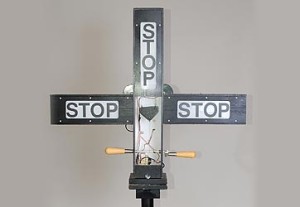 system using signs that could be switched relatively easily by a traffic control officer. His device was relatively simple, yet had key additional safety features that many others at the time did not have. In addition to having “stop” and “go” indicators, it had an “all stop” signal that could be used to clear the intersection to allow pedestrians to cross or to stop cross-traffic before signaling a different direction to proceed. It also had a “half mast” warning position to indicate general caution at times when the device operator was not present. In addition to the signs, his device featured lights and warning bells powered by a battery or a connection to a main power source. system using signs that could be switched relatively easily by a traffic control officer. His device was relatively simple, yet had key additional safety features that many others at the time did not have. In addition to having “stop” and “go” indicators, it had an “all stop” signal that could be used to clear the intersection to allow pedestrians to cross or to stop cross-traffic before signaling a different direction to proceed. It also had a “half mast” warning position to indicate general caution at times when the device operator was not present. In addition to the signs, his device featured lights and warning bells powered by a battery or a connection to a main power source.
|
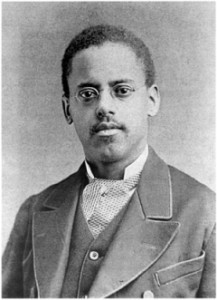 LATIMER, LEWIS H. LATIMER, LEWIS H.
 Lewis Howard Latimer (1848-1928) was an African-American inventor who was a member of Edison’s research team, which was called “Edison’s Pioneers.” Latimer improved the newly-invented incandescent light bulb by inventing a carbon filament (which he patented in 1881).For more information on Lewis Howard Latimer, click here.In 1874, he co patented (with Charles W. Brown) an improved toilet system for railroad cars called the Water Closet for Railroad Cars (U.S. Patent 147,363).In 1876, Alexander Graham Bell employed Latimer, then a draftsman at Bell’s patent law firm, to draft the necessary drawings required to receive a patent for Bell’s telephone. Lewis Howard Latimer (1848-1928) was an African-American inventor who was a member of Edison’s research team, which was called “Edison’s Pioneers.” Latimer improved the newly-invented incandescent light bulb by inventing a carbon filament (which he patented in 1881).For more information on Lewis Howard Latimer, click here.In 1874, he co patented (with Charles W. Brown) an improved toilet system for railroad cars called the Water Closet for Railroad Cars (U.S. Patent 147,363).In 1876, Alexander Graham Bell employed Latimer, then a draftsman at Bell’s patent law firm, to draft the necessary drawings required to receive a patent for Bell’s telephone.
In 1879, he moved to Bridgeport, Connecticut with his brother, William, his mother, Rebecca, and his wife, Mary. Other family members, his brother George A. Latimer and his wife Jane, and his sister Margaret and her husband Augustus T. Hawley and their children, were already living there. Lewis was hired as assistant manager and draftsman for the U.S. Electric Lighting Company, a company owned by Hiram Maxim, a rival of Thomas A. Edison.Latimer received a patent in January 1881 for the “Process of Manufacturing Carbons”, an improved method for the production of carbon filaments used in lightbulbs.
The Edison Electric Light Company in New York City hired Latimer in 1884, as a draftsman and an expert witness in patent litigation on electric lights. Latimer is credited with an improved process for creating a carbon filament at this time, which was an improvement on Thomas Edison’s original paper filament, which would burn out quickly. When that company was combined in 1892 with the Thomson-Houston Electric Company to form General Electric, he continued to work in the legal department. When General Electric and Westinghouse Electric Company formed the “Board of Patent Control” in 1896, to coordinate patent licensing and litigation, Latimer was employed as chief draftsman. In 1911 he became a patent consultant to law firms.
|
McCOY, ELIJAH
 Elijah McCoy (1843 or 1844-1929) was a mechanical engineer and inventor. McCoy’s high-quality industrial inventions (especially his steam engine lubricator) were the basis for the expression “the real McCoy,” meaning the real, authentic, or high-quality thing.For more information on Elijah McCoy, click here. For a cloze activity on McCoy, click here. McCoy continued to refine his devices and design new ones; 50 of his patents dealt with lubricating systems. After the turn of the century, he attracted notice among his black contemporaries. Booker T. Washington in Story of the Negro (1909) recognized him as having produced more patents than any other black inventor up to that time. This creativity gave McCoy an honored status in the black community that has persisted to this day. He continued to invent until late in life, obtaining as many as 57 patents. Most of these were related to lubrication, but others also included a folding ironing board and a lawn sprinkler. Lacking the capital with which to manufacture his lubricators in large numbers, he usually assigned his patent rights to his employers or sold them to investors. Lubricators with the McCoy name were not manufactured until 1920, near the end of his career. He formed the Elijah McCoy Manufacturing Company to produce his works. Elijah McCoy (1843 or 1844-1929) was a mechanical engineer and inventor. McCoy’s high-quality industrial inventions (especially his steam engine lubricator) were the basis for the expression “the real McCoy,” meaning the real, authentic, or high-quality thing.For more information on Elijah McCoy, click here. For a cloze activity on McCoy, click here. McCoy continued to refine his devices and design new ones; 50 of his patents dealt with lubricating systems. After the turn of the century, he attracted notice among his black contemporaries. Booker T. Washington in Story of the Negro (1909) recognized him as having produced more patents than any other black inventor up to that time. This creativity gave McCoy an honored status in the black community that has persisted to this day. He continued to invent until late in life, obtaining as many as 57 patents. Most of these were related to lubrication, but others also included a folding ironing board and a lawn sprinkler. Lacking the capital with which to manufacture his lubricators in large numbers, he usually assigned his patent rights to his employers or sold them to investors. Lubricators with the McCoy name were not manufactured until 1920, near the end of his career. He formed the Elijah McCoy Manufacturing Company to produce his works. |
RILLIEUX, NORBERT
 Norbert Rillieux (March 17, 1806-October 8, 1894) was an African-American inventor and engineer who invented a device that revolutionized sugar processing. Rillieux’s multiple effect vacuum sugar evaporator (patented in 1864) made the processing of sugar more efficient, faster, and much safer. The resulting sugar was also superior. His apparatus was eventually adopted by sugar processing plants all around the world. Norbert Rillieux (March 17, 1806-October 8, 1894) was an African-American inventor and engineer who invented a device that revolutionized sugar processing. Rillieux’s multiple effect vacuum sugar evaporator (patented in 1864) made the processing of sugar more efficient, faster, and much safer. The resulting sugar was also superior. His apparatus was eventually adopted by sugar processing plants all around the world. |
WALKER, MADAME C. J.
 Madam C. J. Walker (December 23, 1867 – May 25, 1919) was an inventor, businesswoman and self-made millionaire. Sarah Breedlove McWilliams C. J. Walker was an African-American who developed many beauty and hair care products that were extremely popular. Madam Walker started her cosmetics business in 1905. Her first product was a scalp treatment that used petrolatum and sulphur. She added Madam to her name and began selling her new “Walker System” door-to-door. Walker soon added new cosmetic products to her line. The products were very successful and she soon had many saleswomen, called “Walker Agents,” who sold her products door to door and to beauty salons. Madam C. J. Walker (December 23, 1867 – May 25, 1919) was an inventor, businesswoman and self-made millionaire. Sarah Breedlove McWilliams C. J. Walker was an African-American who developed many beauty and hair care products that were extremely popular. Madam Walker started her cosmetics business in 1905. Her first product was a scalp treatment that used petrolatum and sulphur. She added Madam to her name and began selling her new “Walker System” door-to-door. Walker soon added new cosmetic products to her line. The products were very successful and she soon had many saleswomen, called “Walker Agents,” who sold her products door to door and to beauty salons. |
Inventors of Note
Benjamin Banneker
His inventive spirit would lead him to be called the “first African American inventor”, Banneker invented the first Farmers’ Almanac.
Andrew Jackson Beard
On November 27, 1897, Beard received a patent for a device he called the Jenny Coupler.
Miriam E. Benjamin
Ms. Benjamin was the second black woman to receive a patent. She received a patent for an invention she called ‘a Gong and Signal Chair for Hotels.’
Henry Blair
Henry Blair was the second black inventor issued a patent by the United States Patent Office.
Bessie Blount
Blount invented a device to help disabled persons eat.
Sarah Boone
The ironing board (U.S. Patent #473,653) was invented by African-American Sarah Boone on December 30, 1887.
Otis Boykin
Boykin invented the ‘Electrical Resistor’ used in computers, radios, television sets and a variety of electronic devices.
Charles Brooks
C. B. Brooks invented the first street sweeper truck and was issued a patent on March 17, 1896.
Henry Brown
Brown patented a ‘receptacle for storing and preserving papers’ on November 2, 1886, which developed into what is now known as the bank safety deposit box
George Washington Carver
Carver invented peanut butter, adhesives, bleach, chili sauce, ink, instant coffee, linoleum, mayonnaise, paper, plastic, pavement, shaving cream, talcum powder and more.
George Carruthers
Carruthers was the inventor of the far-ultraviolet camera and the spectrograph.
Emmett W. Chappelle
Chappelle was a biochemist, photobiologist, astrochemist and inventor.
John B. Christian
John B. Christian invented and patented new lubricants used in high flying aircraft and NASA space missions.
David Crosthwait
Crosthwait holds 39 patents for heating systems and temperature regulating devices. He is most well known for creating the heating system for New York City’s famous Radio City Music Hall.
Mark Dean
Dean co-invented improvements in computer architecture that allowed IBM compatible PCs to use the same peripheral devices.
Dr. Charles Richard Drew
Drew was the first person to develop the blood bank.
Philip Emeagwali
In 1989, Emeagwali won the Gordon Bell Prize, considered the equivalent of the Nobel Prize, for developing the fastest supercomputer software in the world.
Sarah E. Goode
Sarah Goode was the first African-American women to receive a patent (US #322,177), which was issued on 7/14/1885. She invented a type of cabinet bed.
Meredith C. Gourdine
Gourdine was the inventor of electrogasdynamics systems.
Lloyd Augustus Hall
Lloyd Hall is responsible for the meat curing products, seasonings, emulsions, bakery products, antioxidants, protein hydrolysates and many other products that keep our food fresh and flavorable.
Thomas L. Jennings
Thomas L. Jennings was the first African American to receive a patent (US patent3306x), which was issued on March 3rd, 1821.
Lonnie Johnson
Johnson invented the Super Soaker® a squirt gun and also invented thermodynamics systems on the side.
Frederick Jones
Jones invented the first automatic refrigeration system for long-haul trucks.
Marjorie Stewart Joyner
Joyner invented a permanent wave machine that would allow a hairdo to stay set for days.
Percy Lavon Julian
Julian synthesized the medicines physostigmine for glaucoma and cortisone used for rheumatoid arthritis and he invented fire-extinguishing equipment.
Lewis Howard Latimer
Latimer invented the water closet for railroad cars, an electric lamp with an inexpensive carbon filament and a threaded wooden socket for light bulbs.
John Lee Love
The “Love Sharpener” was designed by John Lee Love. Love’s invention is the very simple and portable pencil sharpener that many artists use today.
Jan Earnst Matzeliger
Matzeliger invented an automatic method for lasting shoes, which made the mass production of affordable shoes possible.
Elijah McCoy
McCoy is best known for having invented the automatic oil cup. During his life, McCoy invented and sold 57 different kinds of devices and machine parts, including an ironing board and a lawn sprinkler. His first patent was for a lubricator for steam engines ( US #129,843), which was issued on July 12th, 1872.
Garrett A. Morgan
Morgan invented the gas mask and the automatic traffic signal.
Norbert Rillieux
Rillieux invented the sugar processing evaporator.
Madame Walker
Madame Walker was a St. Louis washerwoman turned entrepreneur, who in 1905 invented a method to soften and smooth African-American hair.
Granville T. Woods
Woods invented improvements to electric railways, air brakes, telephones and telegraphs; a chicken egg incubator and an apparatus for an amusement park ride.

 George Washington Carver (1865?-1943) was an American scientist, educator, humanitarian, and former slave. Carver developed hundreds of products from peanuts, sweet potatoes, pecans, and soybeans; his discoveries greatly improved the agricultural output and the health of Southern farmers. Before this, the only main crop in the South was cotton. The products that Carver invented included a rubber substitute, adhesives, foodstuffs, dyes, pigments, and many other products.For more information on Carver, click here. For a cloze (fill-in-the-blank) activity on Carver, click here.
George Washington Carver (1865?-1943) was an American scientist, educator, humanitarian, and former slave. Carver developed hundreds of products from peanuts, sweet potatoes, pecans, and soybeans; his discoveries greatly improved the agricultural output and the health of Southern farmers. Before this, the only main crop in the South was cotton. The products that Carver invented included a rubber substitute, adhesives, foodstuffs, dyes, pigments, and many other products.For more information on Carver, click here. For a cloze (fill-in-the-blank) activity on Carver, click here. Norbert Rillieux (March 17, 1806-October 8, 1894) was an African-American inventor and engineer who invented a device that revolutionized sugar processing. Rillieux’s multiple effect vacuum sugar evaporator (patented in 1864) made the processing of sugar more efficient, faster, and much safer. The resulting sugar was also superior. His apparatus was eventually adopted by sugar processing plants all around the world.
Norbert Rillieux (March 17, 1806-October 8, 1894) was an African-American inventor and engineer who invented a device that revolutionized sugar processing. Rillieux’s multiple effect vacuum sugar evaporator (patented in 1864) made the processing of sugar more efficient, faster, and much safer. The resulting sugar was also superior. His apparatus was eventually adopted by sugar processing plants all around the world.






 Garrett Augustus Morgan (March 4, 1877 – August 27, 1963), was an African-American inventor and businessman. He was the first person to patent a traffic signal. He also developed the gas mask (and many other inventions). Morgan used his gas mask (patent No. 1,090,936, 1914) to rescue miners who were trapped underground in a noxious mine. Soon after, Morgan was asked to produce gas masks for the US Army.For more information on Morgan, click here.The first American-made automobiles were introduced to consumers just before the turn of the 20th century, and pedestrians, bicycles, animal-drawn wagons and motor vehicles all had to share the same roads. To deal with the growing problem of traffic accidents, a number of versions of traffic signaling devices began to be developed, starting around 1913.Morgan had witnessed a serious accident at an intersection, and he invented a traffic control device and applied for a patent on it in 1922. His invention was a hand-cranked mechanical sign
Garrett Augustus Morgan (March 4, 1877 – August 27, 1963), was an African-American inventor and businessman. He was the first person to patent a traffic signal. He also developed the gas mask (and many other inventions). Morgan used his gas mask (patent No. 1,090,936, 1914) to rescue miners who were trapped underground in a noxious mine. Soon after, Morgan was asked to produce gas masks for the US Army.For more information on Morgan, click here.The first American-made automobiles were introduced to consumers just before the turn of the 20th century, and pedestrians, bicycles, animal-drawn wagons and motor vehicles all had to share the same roads. To deal with the growing problem of traffic accidents, a number of versions of traffic signaling devices began to be developed, starting around 1913.Morgan had witnessed a serious accident at an intersection, and he invented a traffic control device and applied for a patent on it in 1922. His invention was a hand-cranked mechanical sign

 Madam C. J. Walker (December 23, 1867 – May 25, 1919) was an inventor, businesswoman and self-made millionaire. Sarah Breedlove McWilliams C. J. Walker was an African-American who developed many beauty and hair care products that were extremely popular. Madam Walker started her cosmetics business in 1905. Her first product was a scalp treatment that used petrolatum and sulphur. She added Madam to her name and began selling her new “Walker System” door-to-door. Walker soon added new cosmetic products to her line. The products were very successful and she soon had many saleswomen, called “Walker Agents,” who sold her products door to door and to beauty salons.
Madam C. J. Walker (December 23, 1867 – May 25, 1919) was an inventor, businesswoman and self-made millionaire. Sarah Breedlove McWilliams C. J. Walker was an African-American who developed many beauty and hair care products that were extremely popular. Madam Walker started her cosmetics business in 1905. Her first product was a scalp treatment that used petrolatum and sulphur. She added Madam to her name and began selling her new “Walker System” door-to-door. Walker soon added new cosmetic products to her line. The products were very successful and she soon had many saleswomen, called “Walker Agents,” who sold her products door to door and to beauty salons.